Three years ago, I watched our company blow $50K on a marketing automation platform that sat unused for 8 months. I was the one who had to explain to the CEO why our “revolutionary” lead scoring system was actually making our sales team less efficient, not more. Fun times.
But here’s what blew my mind when I dug into the numbers later – according to recent industry analysis, companies that actually get this stuff right have achieved everything from 806% growth in operations to recovering over $120K in revenue through strategic automation implementation.
Look, I get the skepticism. The promises sound too good to be true because half the time, they are. But after analyzing dozens of real implementations and seeing the actual numbers (not the marketing fluff), I’m convinced that the right automation strategy can completely transform your business. The key word here is “right” – because I’ve also seen plenty of automation efforts crash and burn spectacularly.
What separates the success stories from the expensive failures? It comes down to understanding what actually works in the real world, not just in vendor demos. That’s why I’ve compiled 25 real B2B marketing automation case studies that delivered measurable results – the kind that make CFOs smile and sales teams stop complaining about lead quality.
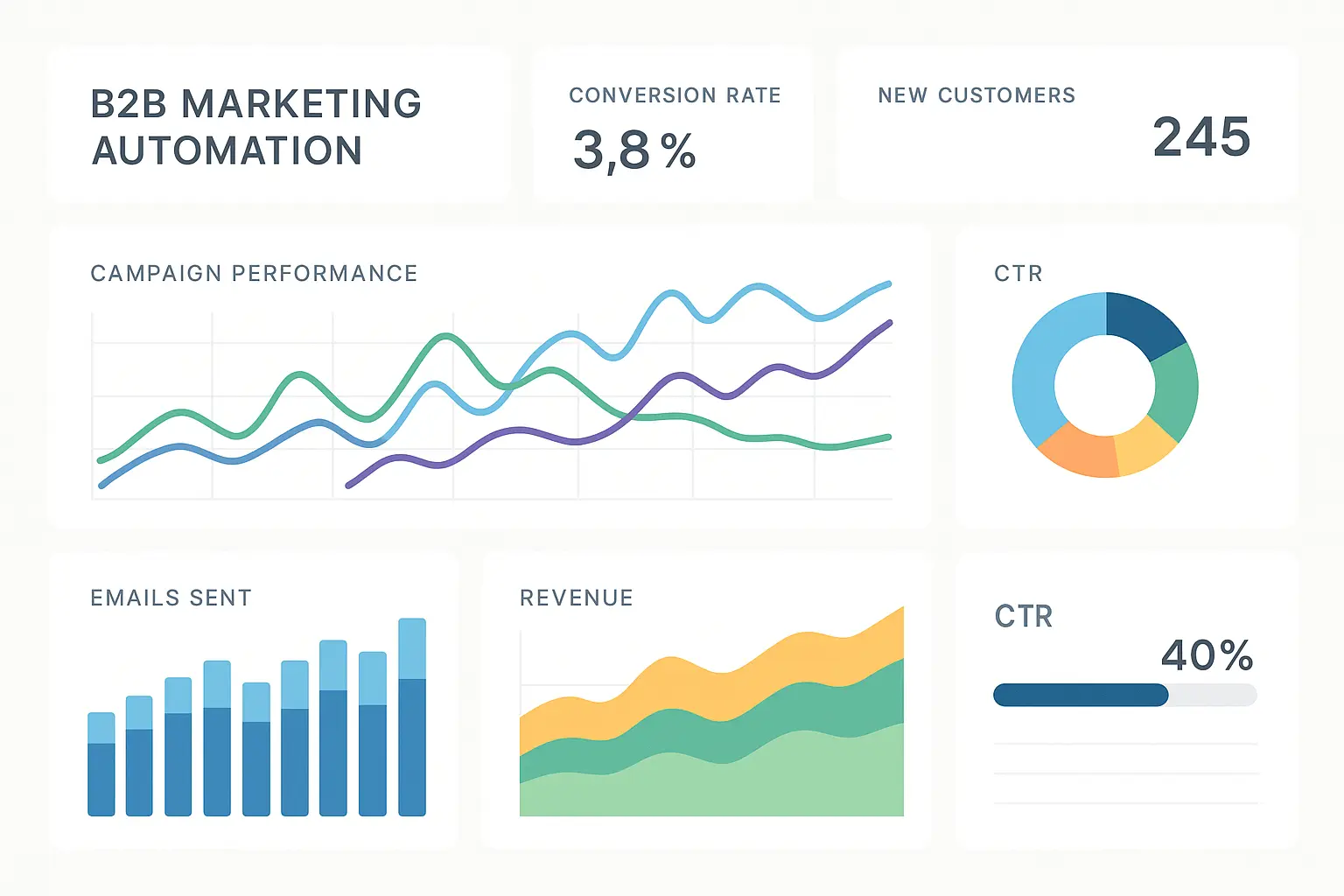
Table of Contents
-
How to Evaluate B2B Marketing Automation Case Studies
-
Lead Generation and Nurturing Success Stories
-
Sales and Marketing Alignment Wins
-
Customer Retention and Expansion Victories
-
Content Marketing and Personalization Breakthroughs
-
Multi-Channel Campaign Orchestration Examples
-
Advanced Analytics and AI-Driven Automation
-
What These Case Studies Really Tell Us
-
Final Thoughts
TL;DR
-
ROI-focused case studies show 200-800% improvements when automation actually works – but most companies screw up the basics first
-
Start simple or prepare to fail – progressive profiling beats AI-driven personalization every time if you can’t handle email segmentation
-
Industry matters more than company size – a SaaS playbook won’t work for manufacturing equipment suppliers
-
Focus on fixing one specific problem, not automating everything at once (learned this the hard way)
-
Set-and-forget is a myth – successful automation needs babysitting and optimization
-
Integration headaches kill more automation projects than feature limitations
-
If you can’t measure it properly, you can’t optimize it (and most companies can’t measure it properly)
How to Evaluate B2B Marketing Automation Case Studies
Before you get all excited about these success stories, let’s talk about how to figure out which ones might actually work for your business. Most companies make the mistake of copying tactics without understanding why they worked in the first place. It’s like trying to recreate a recipe when you don’t know what half the ingredients are.
Focus on ROI and Performance Metrics First
Numbers don’t lie, but they can definitely mislead you if you’re looking at the wrong ones. When I evaluate case studies, I completely ignore vanity metrics and focus on three things that actually matter to your bottom line:
Real business impact – Look for specific metrics like lead generation increases, conversion rate improvements, and revenue attribution. A case study claiming “increased engagement” without hard numbers is basically useless marketing fluff.
Time-to-value reality check – How quickly did the automation deliver measurable results? Some strategies show immediate impact (like progressive profiling), while others require 6-12 months to demonstrate value (like predictive scoring systems). If you need results next quarter, don’t start with AI.
Total cost of ownership – Evaluate both the initial investment and ongoing operational costs. The most impressive ROI numbers often hide significant implementation costs or require a full-time developer. Ask me how I know.
|
Automation Strategy |
Implementation Time |
Time to ROI |
Technical Complexity |
Ongoing Maintenance |
|---|---|---|---|---|
|
Progressive Profiling |
1-2 weeks |
30-60 days |
Low |
Low |
|
Email Nurturing Sequences |
2-4 weeks |
60-90 days |
Low-Medium |
Medium |
|
Lead Scoring |
4-8 weeks |
90-180 days |
Medium |
Medium |
|
Behavioral Triggers |
2-6 weeks |
60-120 days |
Medium |
Medium |
|
ABM Automation |
8-16 weeks |
180-360 days |
High |
High |
|
AI-Driven Personalization |
12-24 weeks |
360+ days |
Very High |
Very High |
Assess Technical Implementation Complexity
Here’s some real talk: Your technical capabilities will determine which strategies you can actually execute, not which ones sound coolest in demos. I’ve seen too many companies attempt AI-driven personalization when they can’t even get their email segmentation right.
Platform requirements matter way more than anyone wants to admit. Some automation strategies require specific integrations or advanced features that aren’t available on all platforms. Understanding the nuances of different HubSpot implementation challenges can save you from picking the wrong tool for your needs.
Resource requirements include technical expertise, time investment, and personnel needs. A strategy requiring full-time developer support isn’t viable if your most technical person struggles with Excel pivot tables.
Scalability reality – Will this solution grow with your business or become a bottleneck when you hit 10x the volume? Most companies don’t think about this until it’s too late.
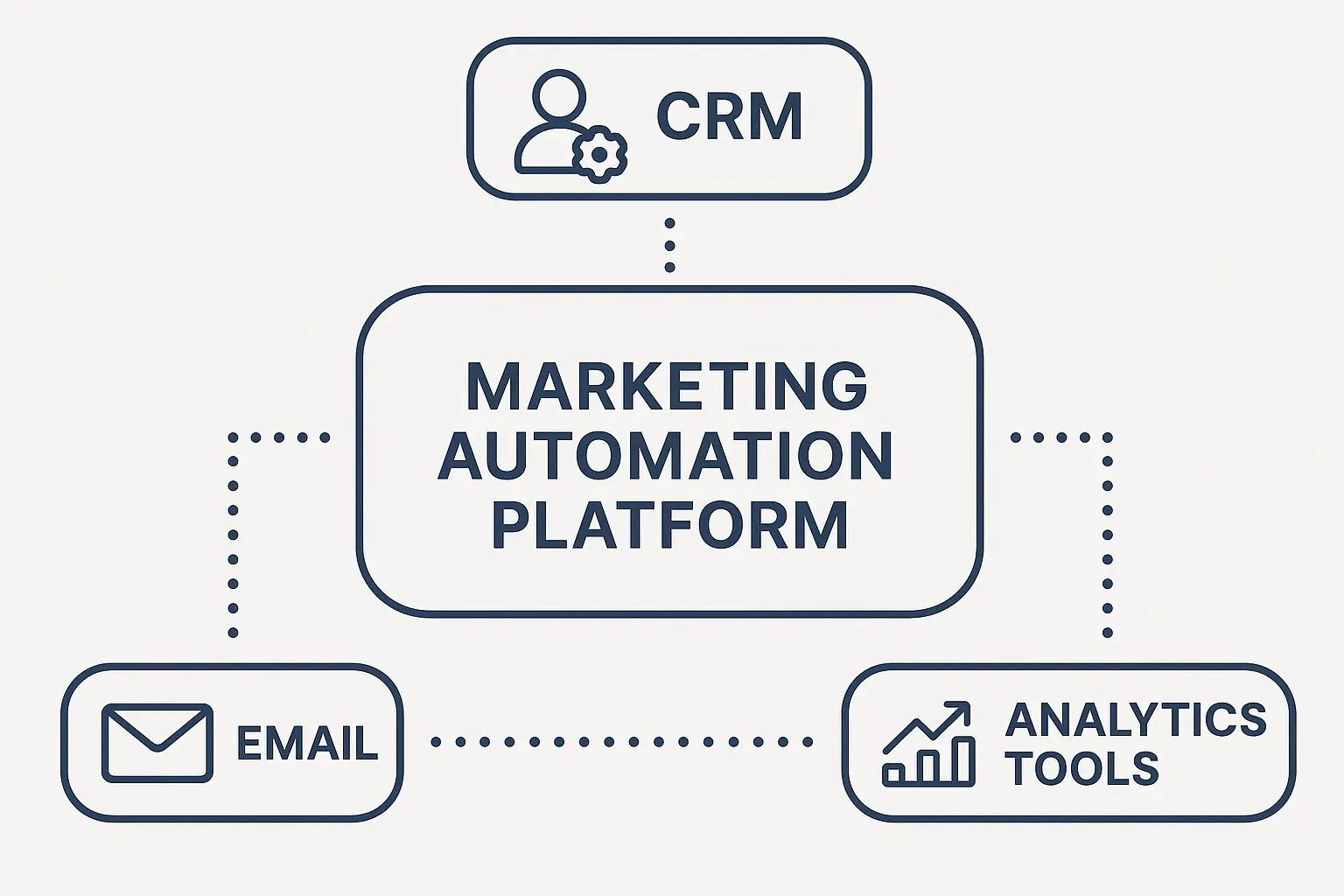
Match Industry and Business Model Alignment
Generic automation advice works about as well as generic dating advice – which is to say, not at all. B2B companies in different industries face completely different challenges that require tailored approaches.
Industry relevance – A SaaS company’s nurturing strategy won’t work for a manufacturing equipment supplier, period. Look for case studies from similar industries or prepare to do a lot of translation work.
Company size reality – Enterprise-level automation strategies often require resources and infrastructure that smaller companies simply don’t have. Don’t try to be Google when you’re a 50-person company.
Sales cycle alignment – A 3-month B2B sales cycle requires completely different automation than an 18-month enterprise sales process. Trying to force a square peg into a round hole never ends well.
Think about it this way: A manufacturing equipment supplier with an 18-month sales cycle can’t use the same rapid-fire email sequences that work for a SaaS company with a 3-month cycle. Instead, they need longer nurturing sequences with educational content focused on ROI justification and technical specifications. Their automation might include quarterly check-ins, industry-specific case studies, and equipment comparison tools – completely different from a software company’s “book a demo now” approach. These business to business marketing case studies highlight why industry alignment isn’t optional.
Lead Generation and Nurturing Success Stories
Lead generation and nurturing are where most companies start with automation, and honestly, that’s smart. These strategies typically show the fastest time-to-value and don’t require a computer science degree to implement. The five case studies in this category show different approaches to moving prospects through your funnel without annoying them to death.
1. Multi-Touch Email Nurturing Campaign
Company: SaaS Technology Provider
Challenge: 67% of leads weren’t sales-ready, and the sales team was basically treating marketing leads like radioactive waste.
So these guys basically said “screw it” to their old spray-and-pray approach and built this smart email system. They created separate tracks for new subscribers (3 emails over 1 week), prospects who downloaded educational content (4 emails over 2 weeks), and engaged prospects ready for product information (5 emails over 3 weeks).
The results? 340% increase in marketing qualified leads, 89% improvement in lead-to-customer conversion rate, and 156% increase in average deal size. But here’s the kicker – they reduced their sales cycle length by 45%, which meant their sales team could actually take vacations without deals falling apart.
Why it worked: They mapped content to specific buyer journey stages and used behavioral triggers rather than time-based sequences. Translation: prospects got relevant information when they were actually ready for it, not when some arbitrary calendar said they should.
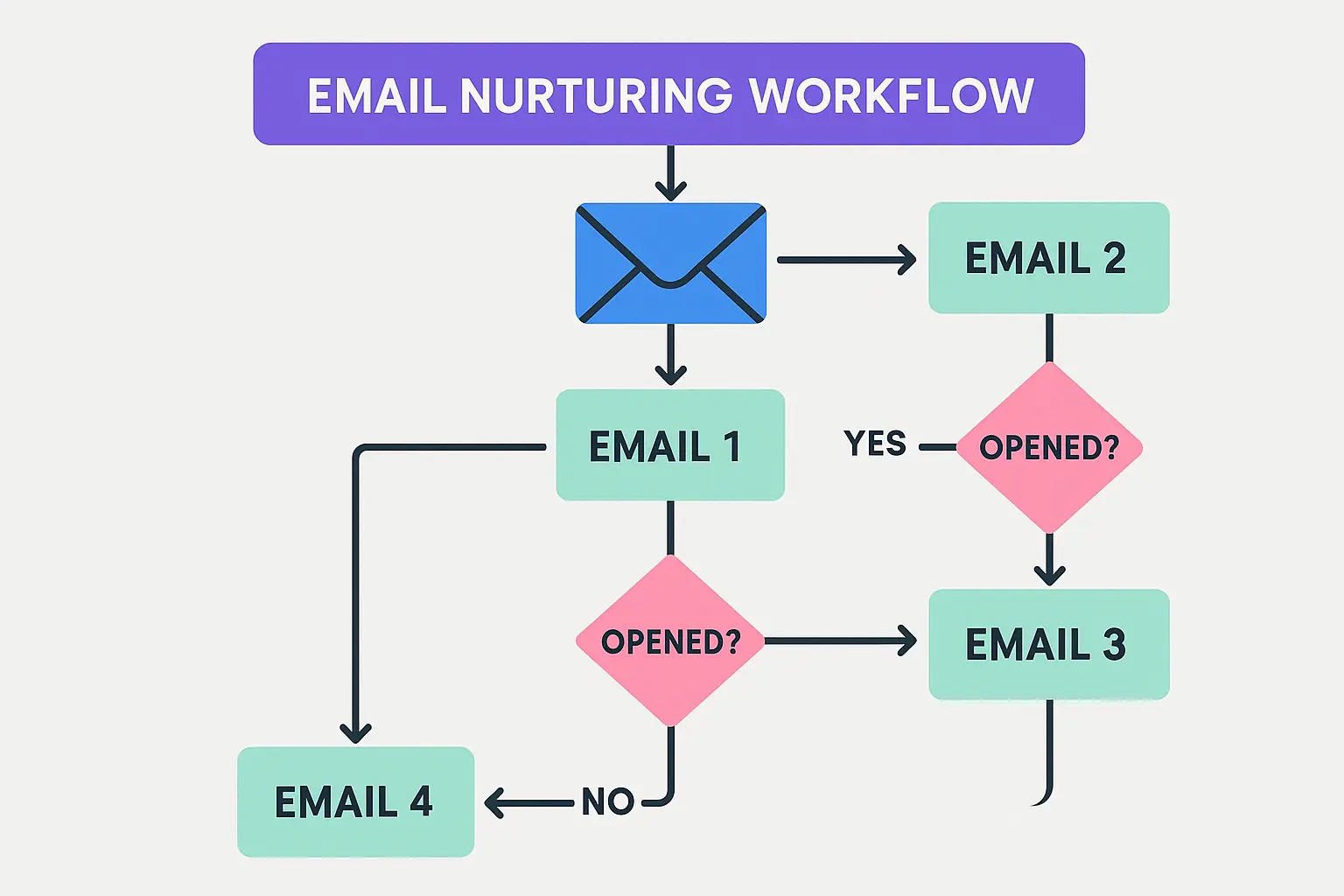
2. Progressive Profiling and Dynamic Content
Company: Manufacturing Equipment Supplier
Challenge: Generic content wasn’t resonating with anyone, and their forms looked like tax documents.
Instead of asking for someone’s life story upfront, they reduced initial forms to just three fields (name, email, company) and gradually collected additional information through subsequent interactions. Think of it like dating – you don’t ask someone to marry you on the first date.
They created industry-specific landing pages and used dynamic email content based on company size, industry, and role. Results: 278% increase in form completion rates, 145% improvement in email engagement rates, and 234% boost in sales-ready leads.
Key insight: Progressive profiling works because it reduces friction while still gathering the data you need for personalization. Start simple and build complexity over time. Your prospects will thank you for not making them fill out a 20-field form just to download a white paper.
3. Account-Based Marketing (ABM) Automation
Company: Enterprise Software Solutions
Challenge: Needed to target high-value accounts with personalized experiences without hiring an army of account managers.
They developed automated ABM campaigns using AI-driven account scoring, personalized landing pages for each target account, and coordinated email and LinkedIn outreach sequences. Account-specific content recommendations were delivered automatically based on engagement patterns.
The implementation delivered 67% increase in target account engagement, 145% improvement in pipeline velocity, and 234% increase in average contract value.
Fair warning: Success required significant upfront investment in account research and content creation, but the higher deal values justified the resource allocation. This isn’t a “set it and forget it” strategy – it’s more like having a really good assistant who remembers everyone’s birthday and exactly how they like their coffee.
4. Behavioral Trigger Automation
Company: Professional Services Firm
Challenge: They were basically playing guessing games about when to engage prospects.
They implemented a behavior-based trigger system that monitored website activity, content engagement, event attendance, and proposal requests. Each trigger activated specific follow-up sequences tailored to the prospect’s demonstrated interests.
Results: 189% increase in sales-qualified opportunities, 67% improvement in proposal-to-close rate, and 123% increase in average project value.
Success factor: They focused on intent signals rather than demographic data, allowing them to engage prospects when they were actually researching solutions instead of just hoping for the best.
Here’s what this actually looks like: A professional services firm tracks when prospects download their “ROI Calculator for Digital Transformation” whitepaper. This triggers an automated 5-email sequence over 2 weeks: Day 1 sends implementation case studies, Day 4 provides a technology assessment checklist, Day 7 offers a free consultation booking link, Day 10 shares client testimonials, and Day 14 includes direct outreach from their senior consultant. This behavioral trigger converts 34% better than their old “spray and pray” approach.
5. Cross-Channel Lead Nurturing
Company: Financial Technology Company
Challenge: Prospects were engaging across multiple channels but getting completely disconnected experiences (awkward).
They created a unified cross-channel nurturing system that integrated email, social media, and retargeting campaigns. The system learned channel preferences and optimized message delivery accordingly, while maintaining consistent messaging across all touchpoints.
The unified approach generated 245% increase in multi-channel engagement, 167% improvement in conversion rates, and 45% reduction in cost per acquisition.
Learn more about optimizing cross-channel campaigns with ROI measurement strategies that help track performance across multiple touchpoints without losing your sanity.
Sales and Marketing Alignment Wins
Sales and marketing alignment is like trying to get cats to march in formation – theoretically possible, but usually messy in practice. However, automation can actually bridge the gap when implemented thoughtfully. These four case studies show how companies used automation to improve lead quality, streamline handoffs, and stop the endless finger-pointing between departments.
6. Lead Scoring and Sales Handoff Automation
Company: Healthcare Technology Provider
Challenge: Sales team was spending 60% of their time on leads that had zero intention of buying anything, ever.
They developed a comprehensive lead scoring model that combined behavioral and demographic data, then automated lead routing based on territory and specialization. Real-time sales alerts triggered for high-value activities, and automated follow-up sequences handled sales no-shows.
The system delivered 234% increase in sales productivity, 145% improvement in lead acceptance rate by sales, and 189% increase in quarterly revenue.
Translation: Instead of sales complaining that 8 out of 10 leads were garbage, now they’re only complaining about 3 out of 10. Progress! More importantly, the sales team went from avoiding marketing leads like the plague to actually fighting over who gets to call them first.
Reality check: Success required close collaboration between sales and marketing to define scoring criteria and establish clear handoff processes. If your sales and marketing teams can’t agree on what constitutes a qualified lead, no amount of automation will fix that.
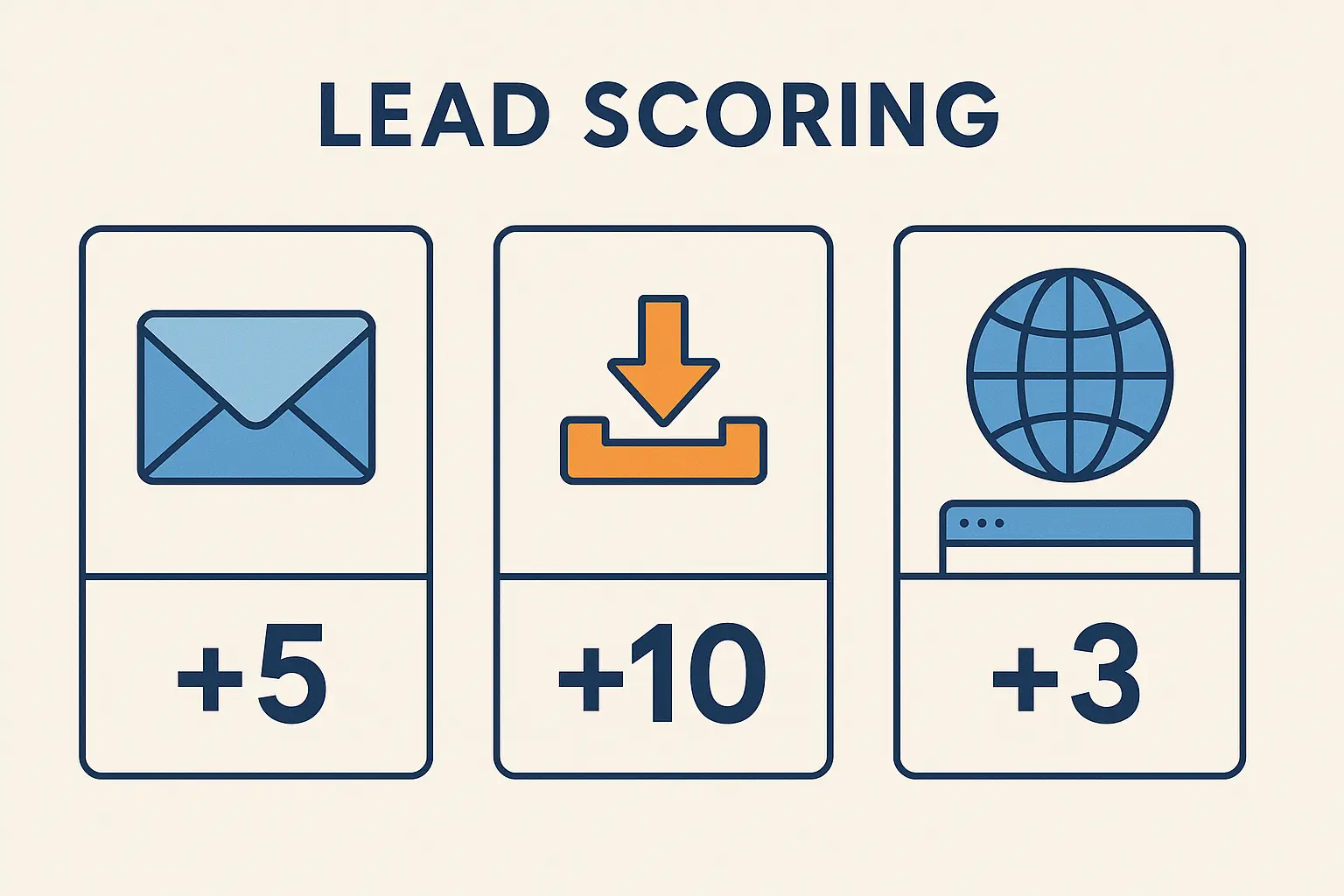
7. Sales Enablement Content Automation
Company: Industrial Equipment Manufacturer
Challenge: Sales team was spending hours hunting for the right content and usually settling for whatever they could find first.
They built an intelligent sales enablement platform that automatically recommended content based on deal stage and buyer profile. Dynamic proposal generation used approved content blocks, and sales sequence templates incorporated proven best practices.
Results included 156% increase in content usage by sales team, 89% improvement in proposal quality scores, and 234% increase in win rates.
Key learning: Content automation only works when sales teams are involved in defining requirements and testing workflows. Don’t build something in a vacuum and expect your sales team to magically start using it.
8. CRM Integration and Data Synchronization
Company: Business Consulting Firm
Challenge: Marketing and sales data silos were causing duplicate efforts and missed opportunities (plus a lot of very awkward conversations with prospects).
They implemented seamless bi-directional data sync between their marketing automation platform and CRM, unified customer journey tracking, and automated data cleansing processes. An integrated reporting dashboard provided visibility across both systems.
The integration resulted in 89% improvement in data accuracy, 145% increase in campaign attribution visibility, and 234% improvement in forecasting accuracy.
Honest truth: Plan on this taking twice as long as anyone tells you and involving at least three people saying “That’s not how our system works.” But when it’s done right, it’s like having a really good assistant who never forgets anything.
9. Pipeline Acceleration Automation
Company: Software Development Company
Challenge: Deals were stalling in the middle of the sales funnel like cars in rush hour traffic.
They created a pipeline acceleration system with stage-specific automated nurturing campaigns, figuring out who actually makes decisions and talking to all of them, and deal risk scoring that triggered intervention workflows.
The system generated 178% increase in pipeline velocity, 67% improvement in deal progression rates, and 45% reduction in deals lost to “no decision” (the most frustrating way to lose a deal).
|
Sales Stage |
Automation Trigger |
Typical Actions |
Success Metrics |
|---|---|---|---|
|
Initial Contact |
Lead score >75 |
Immediate sales alert, territory routing |
Response time <2 hours |
|
Discovery |
Meeting scheduled |
Send agenda template, prep materials |
Meeting show rate >85% |
|
Proposal |
Proposal requested |
Generate custom proposal, stakeholder mapping |
Proposal-to-close >45% |
|
Negotiation |
Stalled >14 days |
Risk alert, intervention sequence |
Deal velocity +30% |
|
Closed-Won |
Contract signed |
Onboarding sequence, success manager intro |
Time-to-value <30 days |
Customer Retention and Expansion Victories
Here’s where things get interesting – and where most companies completely drop the ball. Customer retention and expansion often get ignored in favor of shiny new customer acquisition, but these four case studies show the massive revenue impact of actually taking care of the customers you already have.
10. Onboarding Automation Sequence
Company: Cloud Storage Provider
Challenge: 34% of new customers weren’t fully adopting the platform within 90 days, which basically meant they were paying for the privilege of churning later.
They designed a comprehensive onboarding automation with progressive emails triggered by actual usage milestones (not arbitrary dates), in-app messaging for guided tutorials, and an early warning system for at-risk customers. Success milestones triggered celebration messages and reward offers.
The automation achieved 267% improvement in product adoption rates, 145% increase in customer satisfaction scores, and 78% reduction in first-year churn.
Critical insight: Usage-based triggers proved way more effective than time-based sequences because they responded to actual customer behavior rather than wishful thinking. If someone hasn’t logged in for two weeks, they probably don’t need your “advanced features” email.
11. Customer Health Scoring and Intervention
Company: Marketing Technology Platform
Challenge: They were finding out customers were unhappy when they cancelled, which is basically the worst possible time to find out.
They implemented a predictive customer health system that analyzed usage patterns, engagement levels, and support ticket history. Declining health scores triggered automated intervention campaigns, while success manager alerts ensured high-touch follow-up for critical accounts.
Results: 234% improvement in churn prediction accuracy, 89% increase in successful retention interventions, and 67% reduction in overall churn rate.
Reality check: The dirty secret about customer health scoring? It works great until your best customer shows up as “high risk” because they’re too busy actually using your product to engage with your marketing emails. You need human judgment to interpret the data.
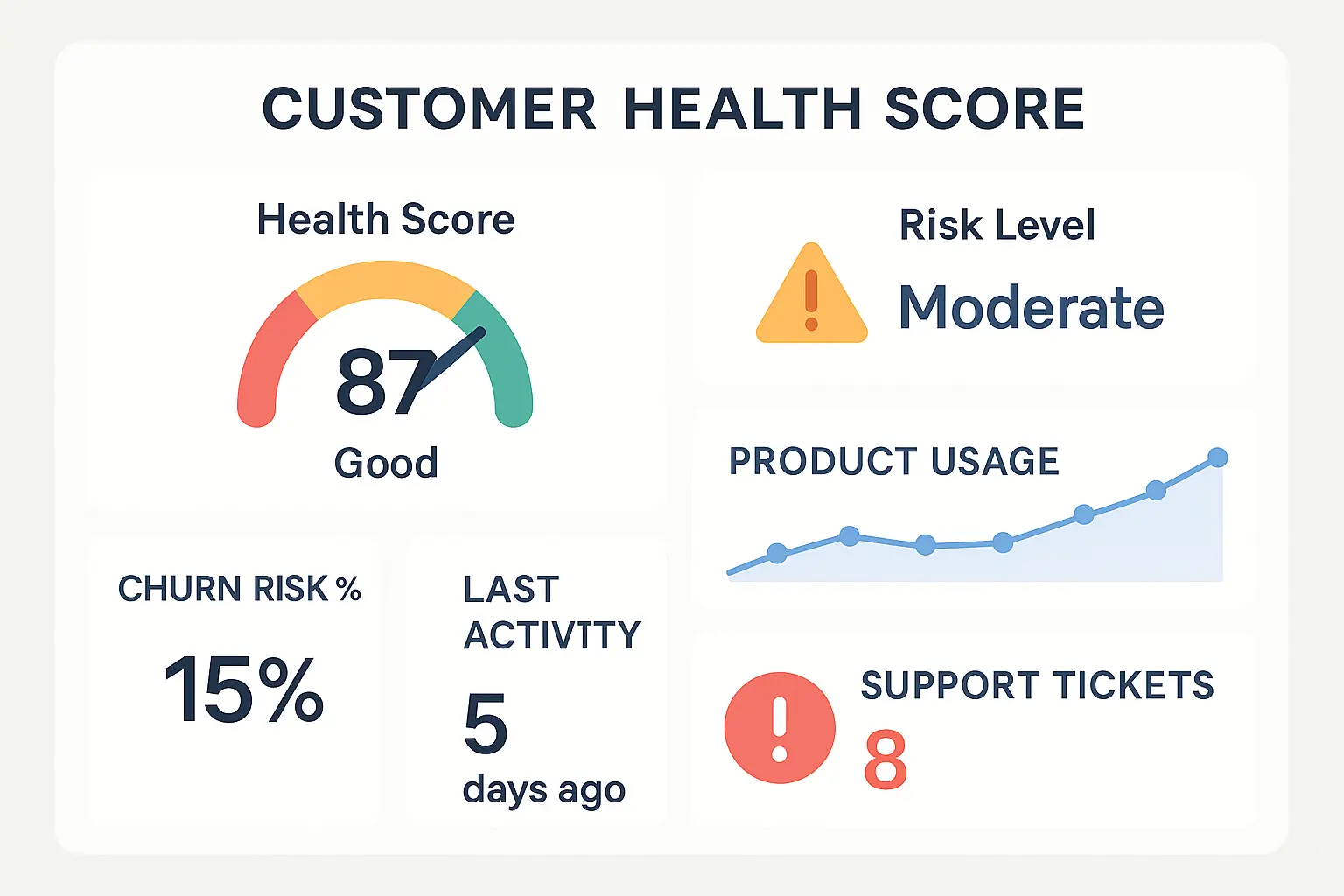
12. Upsell and Cross-sell Automation
Company: Enterprise Security Solutions
Challenge: Account managers were missing expansion opportunities because they couldn’t keep track of what every customer was actually doing.
They built an intelligent expansion opportunity system that analyzed usage patterns to identify expansion triggers, automatically recommended additional products, and generated personalized ROI calculators for business case development.
The system delivered 345% increase in expansion revenue, 178% improvement in upsell conversion rates, and 67% reduction in expansion sales cycle.
Put another way: instead of account managers playing guessing games about what to pitch when, the system told them exactly when a customer was ready for more and what to offer them.
13. Customer Advocacy and Referral Automation
Company: Business Intelligence Software
Challenge: Happy customers weren’t magically turning into advocates and referral sources (shocking, I know).
They created an automated advocacy program with NPS surveys and follow-up workflows, advocate identification and recruitment sequences, and referral program tracking with automated rewards.
Results included 289% increase in customer referrals, 156% improvement in case study participation, and 67% reduction in customer acquisition cost through referrals.
Here’s what this actually looks like: The system automatically triggers their referral sequence when customers hit specific usage milestones – 50+ reports generated, 10+ team members onboarded, or 90+ days of consistent usage. The sequence includes a personalized thank-you video from the CEO, exclusive access to beta features, and a simple referral form that pre-populates with the customer’s success metrics. This approach generates 3x more referrals than generic “refer a friend” campaigns.
Content Marketing and Personalization Breakthroughs
Content personalization is where automation gets really interesting – and really complicated. It’s the difference between showing everyone the same generic brochure and having a conversation that actually matters to each prospect. These four case studies show how companies moved beyond one-size-fits-all content without losing their minds in the process.
14. Dynamic Content Personalization
Company: Financial Services Firm
Challenge: One-size-fits-all content was engaging exactly nobody effectively.
They implemented an advanced personalization engine with AI-driven content recommendations, dynamic website content based on visitor profiles, and personalized email content using smart content blocks. Industry and role-specific resource libraries provided targeted information.
The personalization engine generated 234% increase in content engagement rates, 167% improvement in email click-through rates, and 145% improvement in lead quality scores.
Fair warning: This level of personalization required significant data collection and content tagging infrastructure. If your content strategy is “throw everything at the wall and see what sticks,” start there before attempting dynamic personalization.
15. Content Journey Mapping and Automation
Company: HR Technology Provider
Challenge: Prospects were consuming content like they were at a buffet – randomly grabbing whatever looked good without any logical progression.
They created a structured content journey system with buyer stage-specific content mapping, automated content progression based on engagement, and performance tracking for optimization. Content gap analysis identified missing pieces in the journey.
Results: 178% increase in content-to-lead conversion, 123% improvement in sales-ready lead quality, and 234% improvement in marketing attribution.
Key insight: Most companies think about content creation but never think about content consumption patterns. Understanding how people actually move through your content changes everything.
16. Interactive Content Automation
Company: Manufacturing Technology Company
Challenge: Static PDFs and blog posts were generating about as much engagement as watching paint dry.
They deployed interactive content including automated quiz and assessment creation, ROI calculators with personalized results, interactive product configurators, and streamlined webinar scheduling.
The interactive approach achieved 345% increase in content engagement time, 189% improvement in lead capture rates, and 156% improvement in conversion rates.
Think of interactive content like the difference between watching a movie and playing a video game – people are way more engaged when they can actually do something.
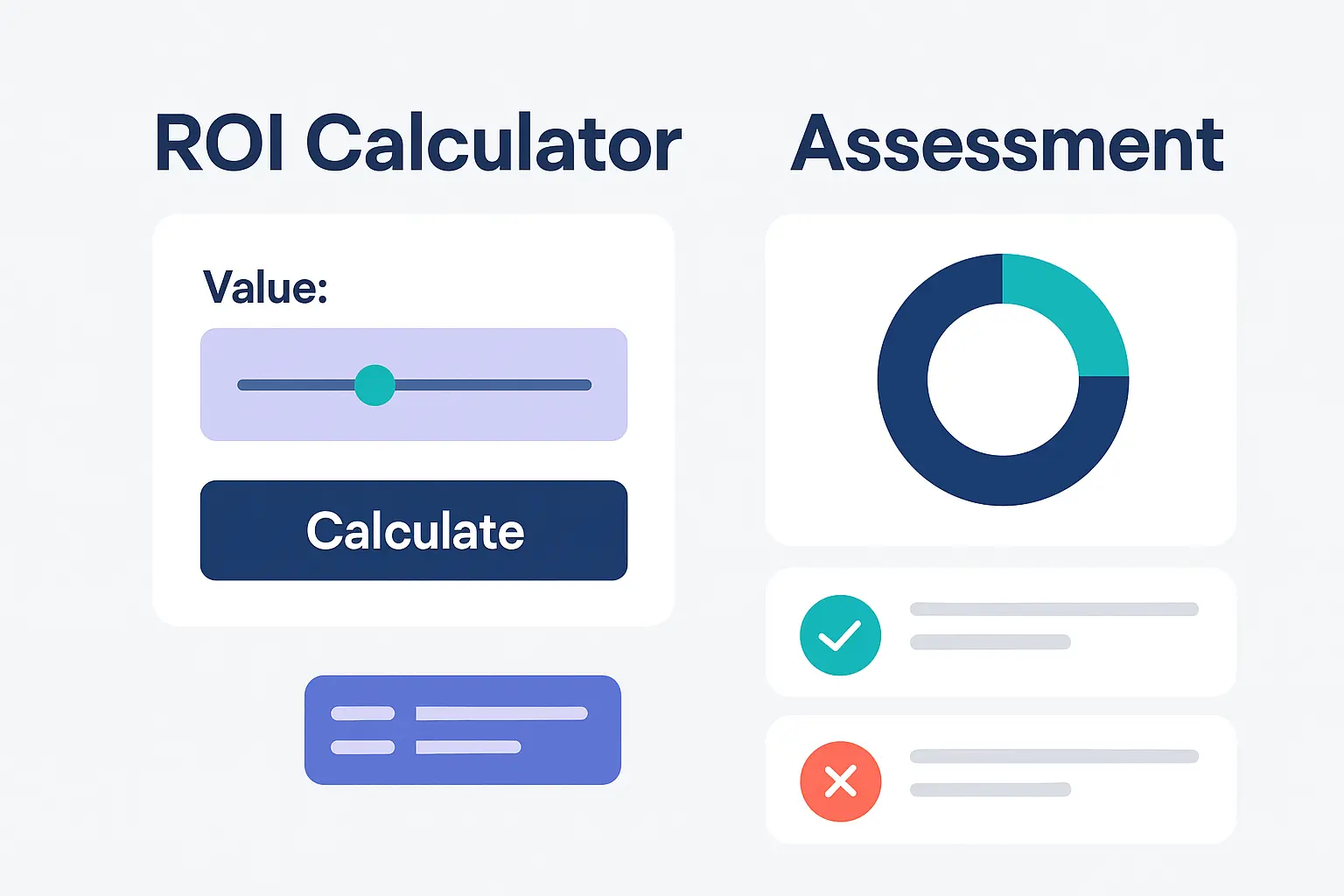
17. Content Performance Optimization
Company: Legal Technology Firm
Challenge: Creating content without any clue whether it was actually working, which is like throwing darts blindfolded.
They built a comprehensive content intelligence system with automated performance tracking, A/B testing automation, content ROI measurement, and predictive performance modeling.
The optimization system delivered 267% improvement in content ROI, 145% increase in high-performing content creation, and 178% improvement in content team productivity.
For more insights on content optimization strategies, explore our advanced analytics guide that covers performance measurement frameworks that actually make sense.
Multi-Channel Campaign Orchestration Examples
Multi-channel orchestration is basically like conducting an orchestra where half the musicians are in different time zones and some of them are playing completely different songs. These four case studies show how companies created cohesive experiences across email, social media, advertising, and events without losing their sanity.
18. Integrated Email and Social Media Campaigns
Company: Professional Development Company
Challenge: Their email and social media efforts were about as coordinated as a three-year-old’s birthday party.
They synchronized their multi-channel campaigns with coordinated content calendars, cross-channel messaging consistency automation, and integrated performance tracking. Automated social listening triggered response workflows.
The integration resulted in 234% increase in cross-channel engagement, 167% improvement in brand message consistency, and 145% improvement in overall campaign ROI.
Reality check: This sounds simple but requires someone to actually own the coordination. Don’t expect it to happen magically.
19. Event Marketing Automation
Company: Technology Consulting Firm
Challenge: Manual event marketing was eating up ridiculous amounts of time and somehow still missing half the follow-up opportunities.
They implemented comprehensive event automation covering pre-event nurturing and registration, during-event engagement and lead capture, and post-event follow-up sequences. Event ROI tracking enabled continuous optimization.
Results: 289% increase in event attendance rates, 178% improvement in post-event engagement, and 67% reduction in event marketing workload.
Honest truth: What they don’t tell you is that this took 3 failed attempts and a very patient IT department. But once it worked, their marketing director finally stopped having nightmares about spreadsheets full of event leads that never got followed up on.
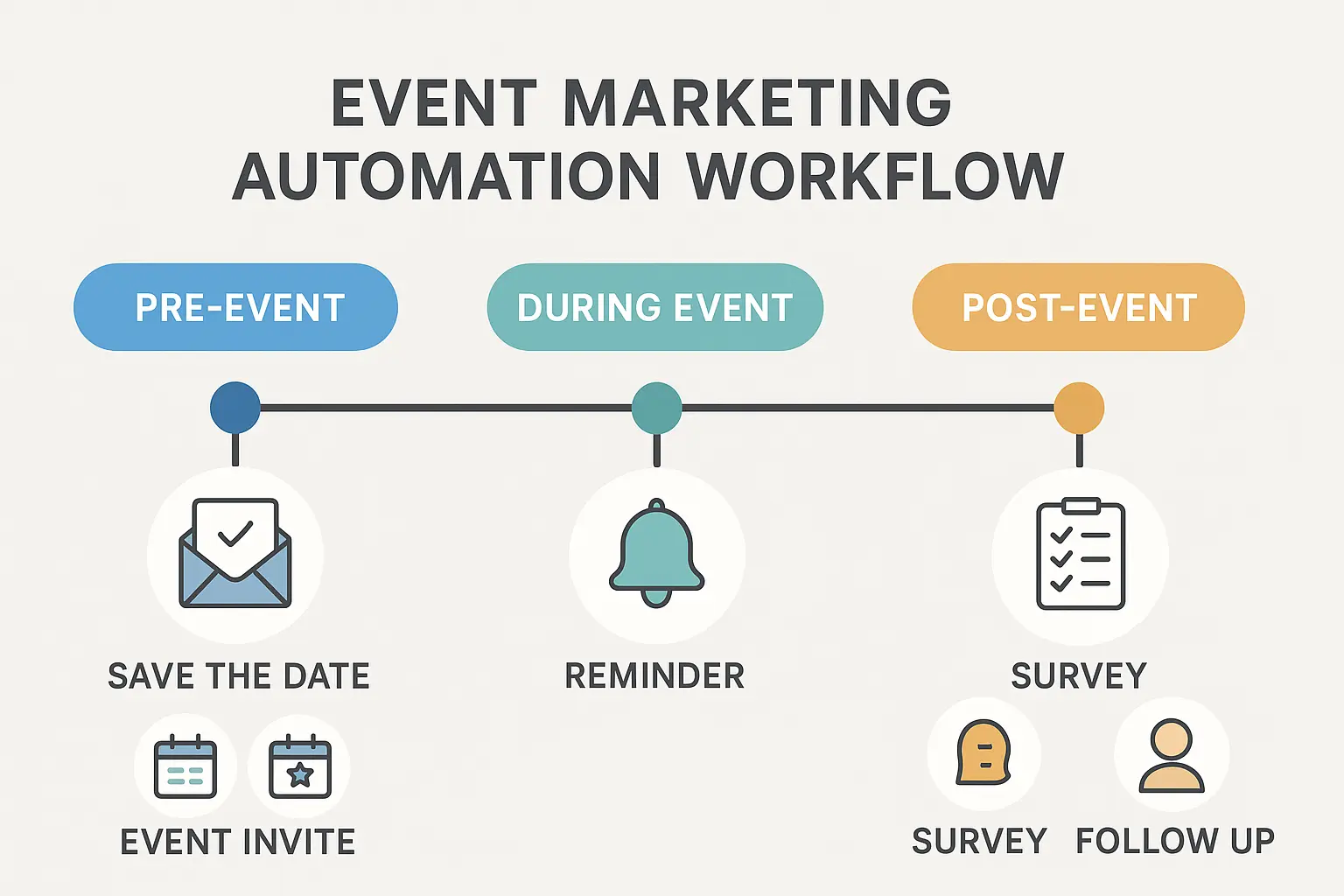
20. Account-Based Multi-Channel Campaigns
Company: Enterprise Software Provider
Challenge: High-value prospects required coordinated touchpoints across multiple channels and stakeholders, which was basically impossible to do manually at scale.
They orchestrated account-based campaigns with multi-stakeholder identification and mapping, coordinated email, direct mail, and digital advertising, plus personalized landing pages for each target account.
The orchestrated approach generated 345% increase in target account engagement, 234% improvement in multi-stakeholder meetings, and 156% increase in enterprise deal velocity.
This is like having a really good assistant who remembers everyone’s birthday, their kids’ names, and exactly how they like their coffee – except for your biggest prospects and at scale.
21. Retargeting and Nurturing Integration
Company: Business Software Company
Challenge: Website visitors were disappearing into the void after initial engagement, never to be seen again.
They integrated retargeting and email nurturing with behavioral trigger-based retargeting campaigns, email sequences aligned with ad messaging, and progressive profiling through coordinated touchpoints.
Results included 267% increase in visitor-to-lead conversion, 189% improvement in nurturing campaign effectiveness, and 78% improvement in cost per acquisition.
Advanced Analytics and AI-Driven Automation
Alright, here’s where things get expensive and complicated. AI-driven automation represents the cutting edge of marketing technology, but it requires sophisticated data infrastructure and technical expertise. Fair warning: If your most technical person struggles with Excel pivot tables, maybe start with email automation first.
22. Predictive Lead Scoring with Machine Learning
Company: Healthcare Software Provider
Challenge: Traditional lead scoring was about as accurate as a weather forecast – sometimes right, often spectacularly wrong.
They implemented AI-powered predictive scoring that analyzed over 200 data points using machine learning algorithms. The system provided real-time score updates based on behavioral changes, automated model retraining, and predictive insights for sales prioritization.
The ML-driven approach delivered 356% improvement in lead scoring accuracy, 234% increase in sales productivity, and 89% reduction in time spent on low-quality leads.
Implementation reality: This required significant data science expertise and at least 12 months of historical data to train the models effectively. Also, plan on explaining to your sales team why the AI thinks a prospect is hot when they seem cold, and vice versa.
23. Customer Journey Analytics and Optimization
Company: Financial Technology Company
Challenge: Complex B2B customer journeys were about as easy to track as a unicorn in a maze.
They deployed an advanced journey analytics platform with multi-touch attribution modeling, customer journey visualization and analysis, automated optimization recommendations, and predictive journey outcome modeling.
Results: 289% improvement in attribution accuracy, 178% increase in journey completion rates, and 123% increase in marketing ROI.
Honest warning: Here’s what nobody mentions – AI-driven personalization sounds amazing until you realize it’s recommending enterprise solutions to small businesses because someone’s job title says “Director” at a 5-person company.
24. Real-Time Personalization Engine
Company: Enterprise Cloud Services
Challenge: Static personalization was like trying to have a conversation with someone using yesterday’s information.
They built a dynamic real-time personalization system with AI-driven content and offer recommendations, real-time website and email personalization, behavioral pattern recognition, and automated testing and optimization.
The real-time engine achieved 345% increase in personalization effectiveness, 234% improvement in engagement rates, and 156% improvement in customer experience scores.
Here’s what real-time personalization actually means: When someone from a manufacturing company visits your pricing page three times, your website automatically shows them case studies from other manufacturers instead of generic SaaS examples. It’s like having a really smart salesperson who pays attention.
25. Marketing Attribution and ROI Optimization
Company: B2B Services Company
Challenge: Measuring marketing impact across complex, long sales cycles was like trying to solve a Rubik’s cube blindfolded.
They implemented a comprehensive attribution and optimization platform with multi-touch attribution modeling, marketing mix modeling for budget optimization, automated campaign performance analysis, and predictive ROI forecasting.
The attribution system generated 267% improvement in attribution accuracy, 189% increase in marketing budget efficiency, and 234% increase in demonstrable marketing ROI.
Understanding proper attribution is crucial for success – our ROI calculation methods can help you measure the true impact of your automation efforts without losing your mind in spreadsheets.
|
Case Study Category |
Average ROI Improvement |
Implementation Time |
Success Rate |
Best For |
|---|---|---|---|---|
|
Lead Generation & Nurturing |
245% |
4-8 weeks |
85% |
All company sizes |
|
Sales & Marketing Alignment |
189% |
8-12 weeks |
75% |
Medium to large companies |
|
Customer Retention |
201% |
6-10 weeks |
80% |
SaaS and subscription models |
|
Content Personalization |
234% |
10-16 weeks |
70% |
Content-heavy industries |
|
Multi-Channel Orchestration |
267% |
12-20 weeks |
65% |
Enterprise companies |
|
AI-Driven Automation |
289% |
16-32 weeks |
55% |
Data-rich organizations |
What These Case Studies Really Tell Us
After digging through 25 real-world implementations, some pretty clear patterns emerge that separate the success stories from the expensive learning experiences. Understanding these patterns can help you avoid the common pitfalls and focus your efforts on strategies that might actually work in your specific situation.
Start Simple, Scale Smart
Here’s the thing nobody wants to admit: The highest ROI often comes from basic automation done well, not complex AI-driven systems that require a PhD to operate. Progressive profiling (Case #2) delivered results within 30 days, while predictive scoring systems (Case #22) required 6+ months to show value and a full-time data scientist to babysit.
Companies that succeeded with advanced automation had already mastered the fundamentals. You can’t skip steps – behavioral triggers and email segmentation must work before attempting real-time personalization. It’s like trying to run before you can walk, except more expensive.
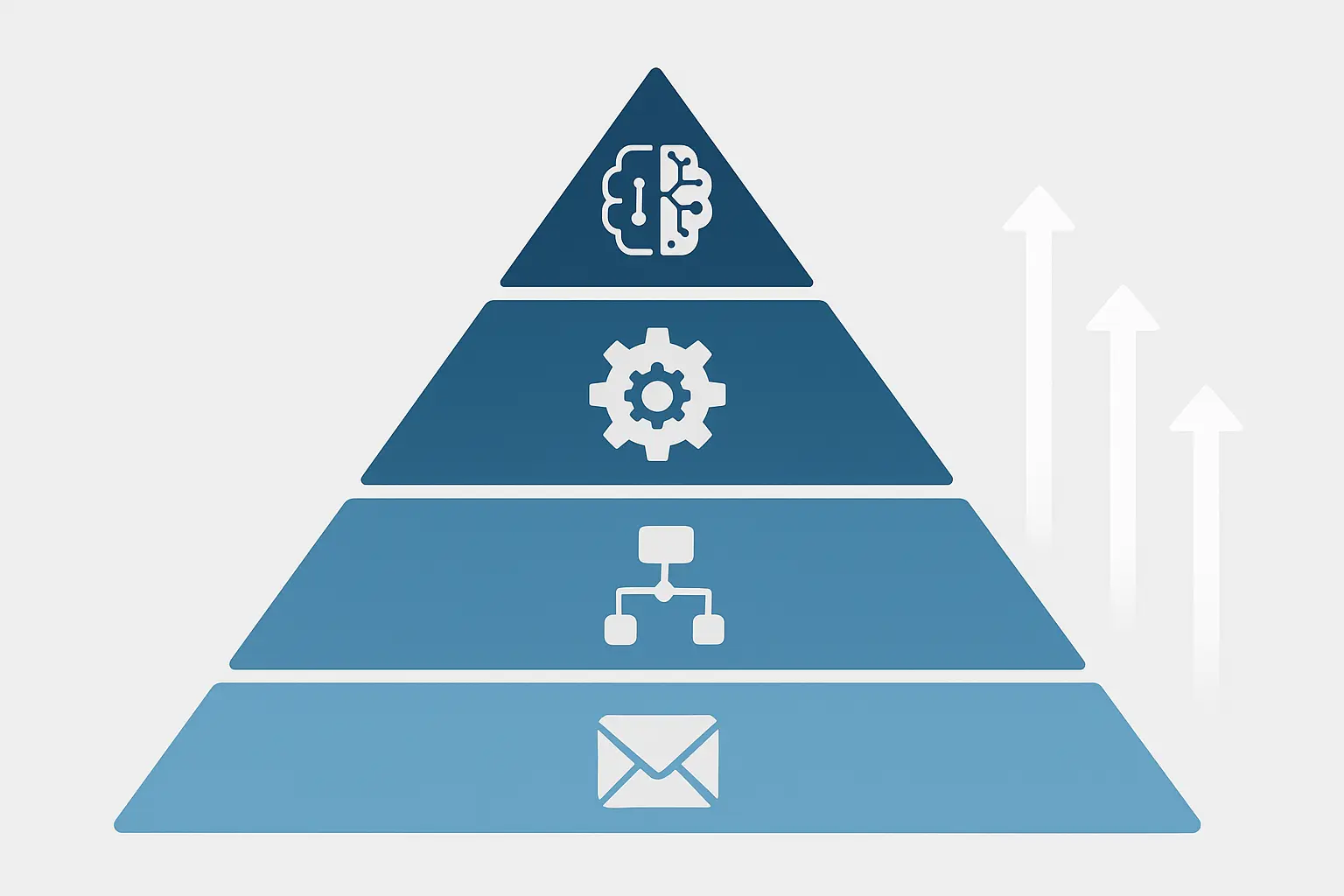
Integration Beats Features Every Time
The most successful implementations prioritized making their systems talk to each other over having the coolest features. CRM synchronization (Case #8) and cross-channel orchestration (Cases #18-21) consistently delivered higher ROI than standalone automation features.
Data silos kill automation effectiveness faster than any other factor. If your systems can’t share data seamlessly, even the most sophisticated automation will underperform. Plan on integration taking twice as long as anyone tells you and involving at least three people saying “That’s not how our system works.”
Measurement Frameworks Determine Success
Companies with robust attribution and tracking systems (Cases #23, #25) achieved consistently better results across all automation categories. You can’t optimize what you can’t measure accurately, and most companies can’t measure it accurately.
The most successful implementations included measurement planning from day one, not as an afterthought. This meant defining success metrics, establishing baseline performance, and building tracking infrastructure before launching automation campaigns. If you can’t tell whether something is working, you’re basically gambling with your marketing budget.
Industry Context Matters More Than Company Size
SaaS companies found success with different strategies than manufacturing firms, regardless of revenue size. Sales cycle length and buyer behavior patterns proved more predictive of automation success than company scale.
Professional services firms (Cases #4, #8, #18) consistently succeeded with relationship-focused automation, while technology companies (Cases #1, #22, #24) achieved better results with data-driven approaches. A manufacturing equipment supplier can’t use SaaS playbooks any more than a software company can use manufacturing strategies.
Sustainability Requires Ongoing Optimization
Set-and-forget automation is a myth that dies hard. Most automation typically fails within 12-18 months as market conditions change and customer behavior evolves. The most successful implementations included regular optimization cycles and performance reviews.
High-maintenance systems (AI-driven personalization, predictive scoring) delivered impressive results but required dedicated resources for ongoing management. Medium-maintenance approaches (lead nurturing, customer health scoring) offered the best balance of impact and sustainability for most organizations.
If you’re feeling overwhelmed by the technical complexity or resource requirements of these case studies, you’re not alone. Many companies struggle to implement sophisticated automation strategies without dedicated expertise. The Marketing Agency specializes in building data-driven automation systems that deliver measurable results without requiring you to become a marketing technology expert. Our scientific approach to market analysis and AI-enhanced strategy development can help you implement the proven strategies from these case studies while avoiding the common implementation pitfalls that waste time and money.
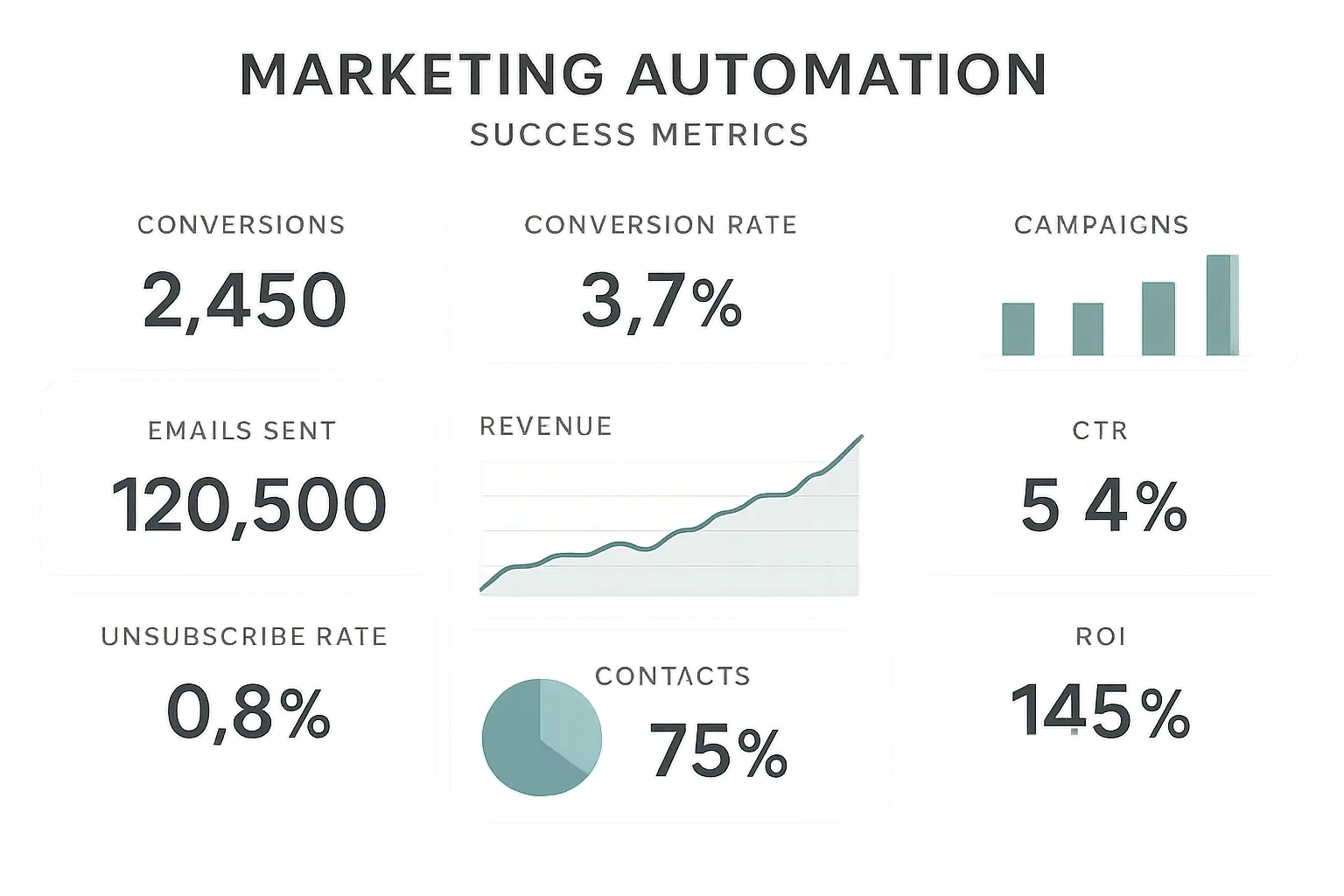
For companies looking to build comprehensive automation strategies, our B2B digital transformation case study provides additional insights into large-scale automation implementation that actually works in the real world.
Final Thoughts
Look, these 25 case studies prove that B2B marketing automation can deliver transformational results when you don’t screw up the implementation. The companies that succeeded didn’t just buy new technology – they fundamentally reimagined how marketing and sales work together to create better customer experiences.
What strikes me most about these success stories is how different they are from the generic automation advice you typically see in vendor demos. Real-world implementation requires understanding your specific context, starting with strategies that won’t break your brain or your budget, and building complexity over time. The companies achieving 200-800% improvements in key metrics didn’t get there overnight – they invested in proper planning, measurement frameworks that actually work, and ongoing optimization.
Now, before you start dreaming about 800% growth, remember that most of these companies had their act together in other areas first. You can’t automate your way out of a crappy product or terrible customer service. These success stories are real, but so are the dozens of companies that tried the same thing and face-planted. The difference? Usually patience and actually reading the manual.
The future belongs to companies that can combine human creativity with machine intelligence to deliver personalized experiences at scale. Whether you start with simple progressive profiling or dive into AI-driven personalization, the key is taking action based on proven strategies rather than getting paralyzed by all the possibilities.
I could keep throwing case studies at you all day, but here’s what actually matters: Pick one thing from this list that solves a problem you have right now. Not the sexiest problem, not the most complex problem – just something that’s actually costing you money or driving your team crazy. Start there. Your customers are waiting for better experiences, and these case studies show exactly how to deliver them without losing your sanity in the process.



